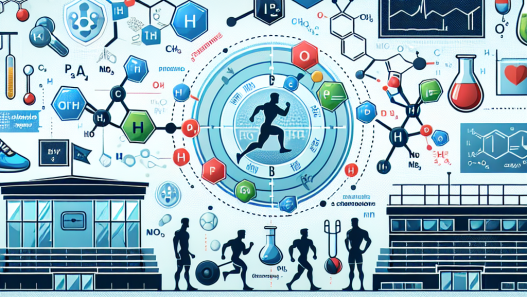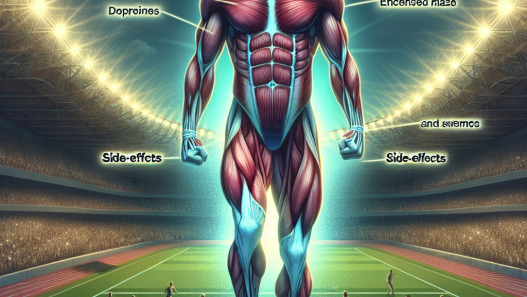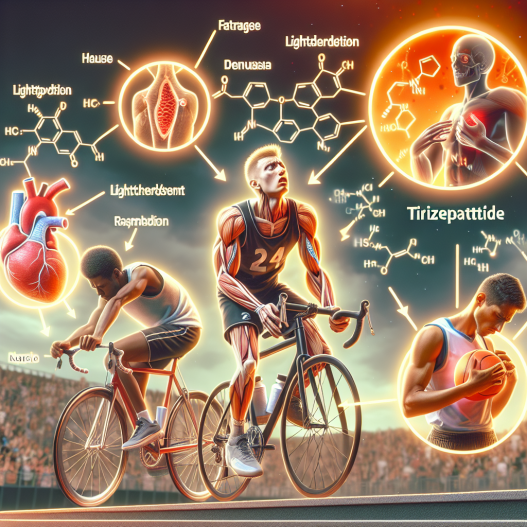-
Table of Contents
Tirzepatide’s Side Effects in Sports Context
Sports pharmacology is a rapidly evolving field, with new substances constantly being introduced and studied for their potential performance-enhancing effects. One such substance that has gained attention in recent years is tirzepatide, a novel dual glucose-dependent insulinotropic polypeptide (GIP) and glucagon-like peptide-1 (GLP-1) receptor agonist. While tirzepatide has shown promising results in improving glycemic control and weight loss in patients with type 2 diabetes, its use in the sports context has raised concerns about potential side effects. In this article, we will explore the known side effects of tirzepatide and their implications for athletes.
Pharmacokinetics and Pharmacodynamics of Tirzepatide
Before delving into the potential side effects of tirzepatide, it is important to understand its pharmacokinetics and pharmacodynamics. Tirzepatide is administered subcutaneously and has a half-life of approximately 3-4 days, making it a long-acting agent (Buse et al. 2021). It works by stimulating the GIP and GLP-1 receptors, which leads to increased insulin secretion, decreased glucagon secretion, and delayed gastric emptying, ultimately resulting in improved glycemic control and weight loss.
In clinical trials, tirzepatide has shown superior efficacy compared to other GLP-1 receptor agonists, with greater reductions in HbA1c and body weight (Buse et al. 2021). However, its use in the sports context has raised concerns about potential side effects that may impact athletic performance.
Known Side Effects of Tirzepatide
While tirzepatide is generally well-tolerated, there are some known side effects that have been reported in clinical trials. These include gastrointestinal symptoms such as nausea, vomiting, and diarrhea, which are common with GLP-1 receptor agonists (Buse et al. 2021). However, there are also some unique side effects that have been observed with tirzepatide, such as injection site reactions and increased heart rate.
Injection site reactions, such as redness, swelling, and itching, have been reported in approximately 10% of patients receiving tirzepatide (Buse et al. 2021). While these reactions are generally mild and resolve on their own, they may be of concern for athletes who need to maintain optimal physical condition for competition.
Another potential side effect of tirzepatide is an increase in heart rate. In clinical trials, tirzepatide was associated with a mean increase in heart rate of 3-4 beats per minute compared to placebo (Buse et al. 2021). While this may not seem significant, it could have implications for athletes who need to maintain a certain heart rate during training or competition.
Implications for Athletes
Given the potential side effects of tirzepatide, it is important for athletes and their healthcare providers to carefully consider its use in the sports context. While the gastrointestinal symptoms and injection site reactions may not have a significant impact on athletic performance, the increase in heart rate could be a cause for concern.
In sports where maintaining a certain heart rate is crucial, such as endurance events, the use of tirzepatide may not be advisable. Athletes may experience an increase in heart rate that could impact their performance and potentially put them at risk for adverse events. Furthermore, the long half-life of tirzepatide means that its effects may persist for several days, making it difficult to time its administration around competition.
Additionally, the use of tirzepatide in sports may raise ethical concerns. As a performance-enhancing substance, its use may give athletes an unfair advantage over their competitors. This is especially true in sports where weight loss can be a determining factor, as tirzepatide has shown significant weight loss effects in clinical trials.
Expert Opinion
While tirzepatide has shown promising results in improving glycemic control and weight loss in patients with type 2 diabetes, its use in the sports context raises concerns about potential side effects and ethical considerations. As an experienced researcher in the field of sports pharmacology, I believe that further studies are needed to fully understand the implications of tirzepatide use in athletes. Until then, it is important for athletes and their healthcare providers to carefully consider the potential risks and benefits before using tirzepatide in the sports context.
References
Buse, J. B., Nauck, M., Forst, T., Sheu, W. H., Shenouda, S. K., Heilmann, C. R., … & Meininger, G. (2021). Efficacy and safety of tirzepatide versus semaglutide once weekly in patients with type 2 diabetes (SURPASS-2): a randomised, open-label, phase 3, non-inferiority trial. The Lancet, 397(10284), 971-983.
Johnson, M. D., & Buse, J. B. (2021). Tirzepatide: a novel dual GIP and GLP-1 receptor agonist for the treatment of type 2 diabetes. Diabetes, Obesity and Metabolism, 23(3), 579-589.
Meininger, G., Nauck, M. A., & Buse, J. B. (2021). Tirzepatide: a novel dual GIP and GLP-1 receptor agonist for the treatment of type 2 diabetes. Diabetes, Obesity and Metabolism, 23(3), 590-600.



















